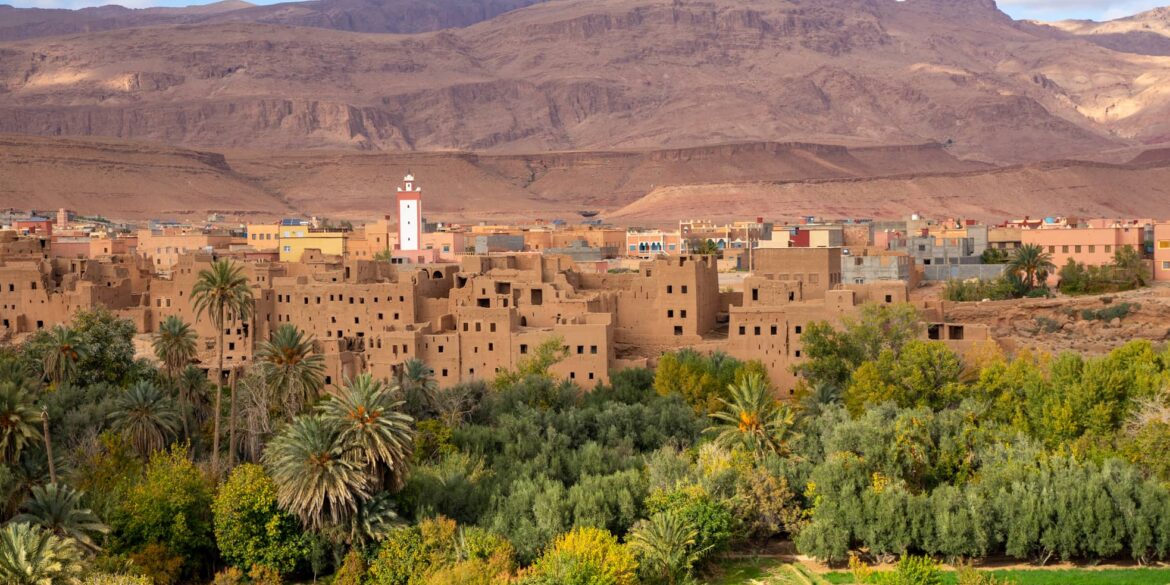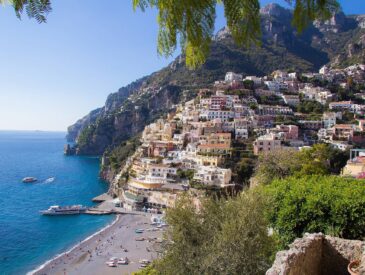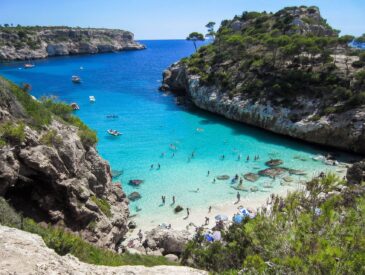Table of Contents
Morocco is a prime candidate for a great road trip destination. While it’s not always easy to explore Africa alone, Morocco is one of the safest places to visit. Driving and renting a car are child’s play, except in Marrakech, which I strongly advise against.
This 1 week Morocco itinerary explores the country’s south, from 3 days in Marrakech to the picturesque Atlas Mountains, passing through canyons and rural villages.
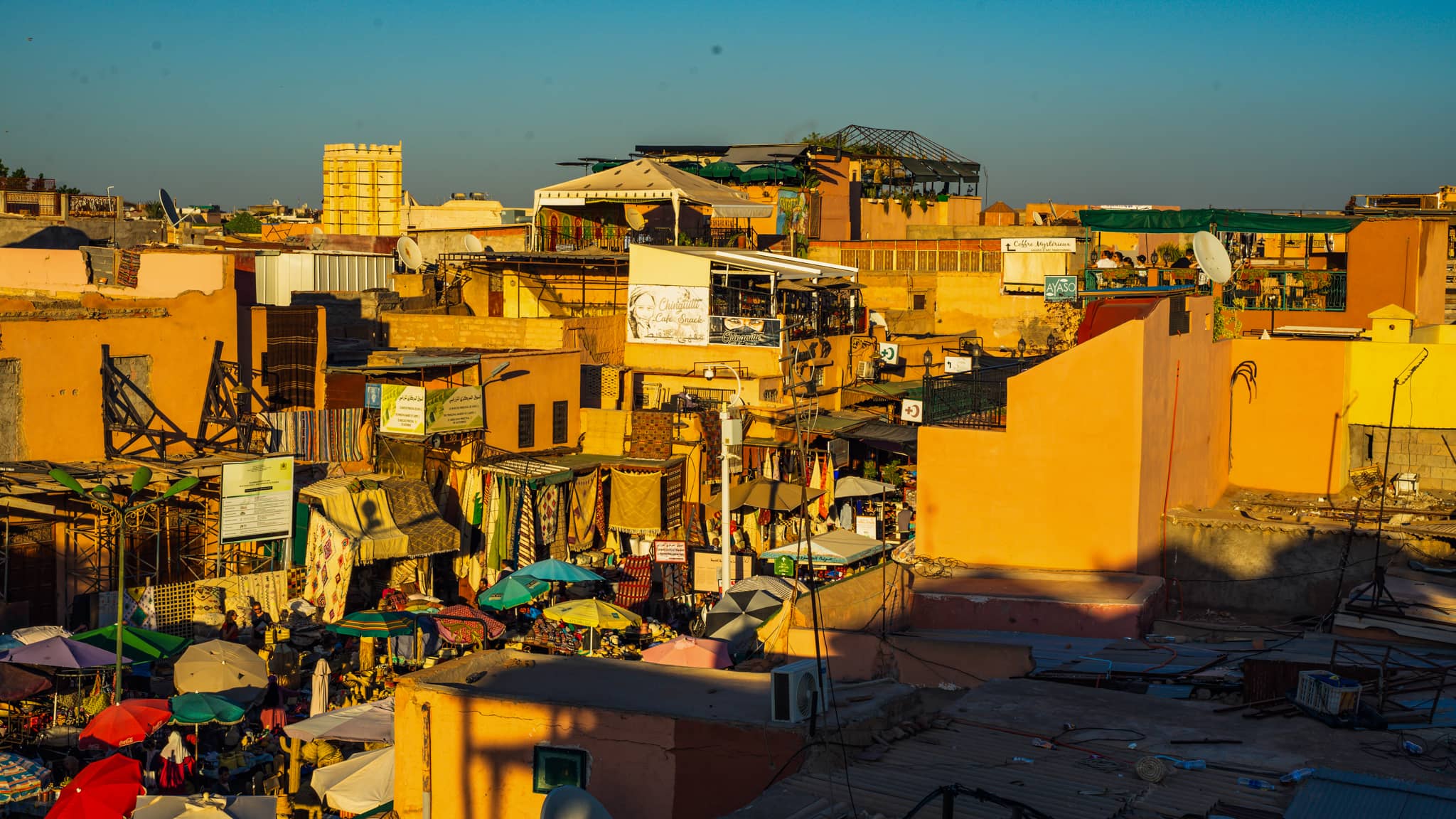
Morocco 1 week itinerary: What to see?
Morocco in a nutshell
Morocco is an incredibly diverse country. Vibrant cities are home to medieval medinas, where the furious clamor of life spills out onto the streets. Landscapes of towering mountains, craggy canyons, and sprawling dunes provide an ideal canvas for breathtaking hikes.
In the traditional villages nestled at the foot of the mountains, the pace of life slows considerably. The people are the friendliest and most helpful you’ll ever meet.
If you’re wondering why you should travel to Morocco, I’ve numbered a few reasons for you.
- The architectural heritage is exceptional.
- Just a 3-hour flight from Europe, a change of scenery is guaranteed.
- The landscapes are grandiose, varied, and truly unspoiled.
- A culinary voyage!
- It is an affordable destination.
- And don’t forget sun, sun, and more sun!
Looking for a nice riad in Marrakech for your Morocco itinerary? This guide shows you an incredible riad where I stayed during my 3 days in Marrakech.
Morocco 1 week itinerary: Advice for a road trip
We booked our car through Green Motion, an agency I do not recommend! It was the first time we’d been ripped off when renting a car. Our credit card didn’t work, although everything was in order at the bank. So they forced us to take out additional insurance, which doubled the price.
Rent your car from a reliable company!
As you can see, beware of car rental agencies in Morocco. Many are notorious for their dubious practices: You won’t get your deposit back, the car isn’t well maintained, or they try to get you to take out double or additional insurance—a boring start (or end) to your vacation.
Road conditions
Main roads are generally in good condition, but rural roads can be narrow and poorly maintained. Speed limits are generally 60 km/h in urban areas, 100 km/h outside, and 120 km/h on freeways.
Parking
The Moroccan parking system differs from that of most other countries. In most cities, unofficial parking attendants are present on the streets. They wear bright vests and charge a few dirhams for daytime parking (for any length of time) and car security. If you’re leaving your car for an extended period, let the attendant know and discuss the fee.
Morocco 1 week itinerary: Our road trip itinerary
Marrakech (3 nuits) – Ait Ben Haddou (1 nuit) – Tinghir (1nuit) – Gorges de Dades – Marrakech (2 nuits)
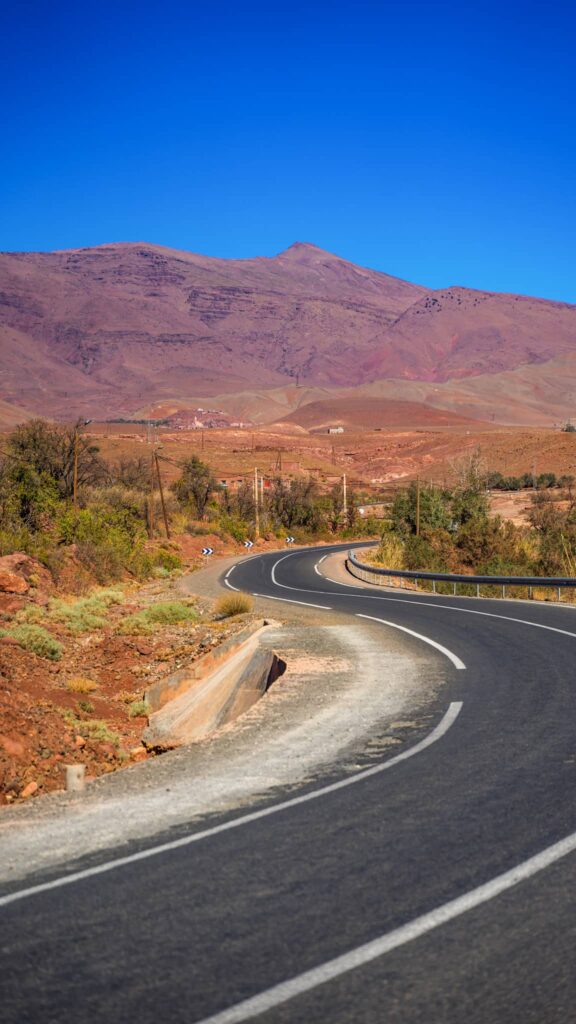
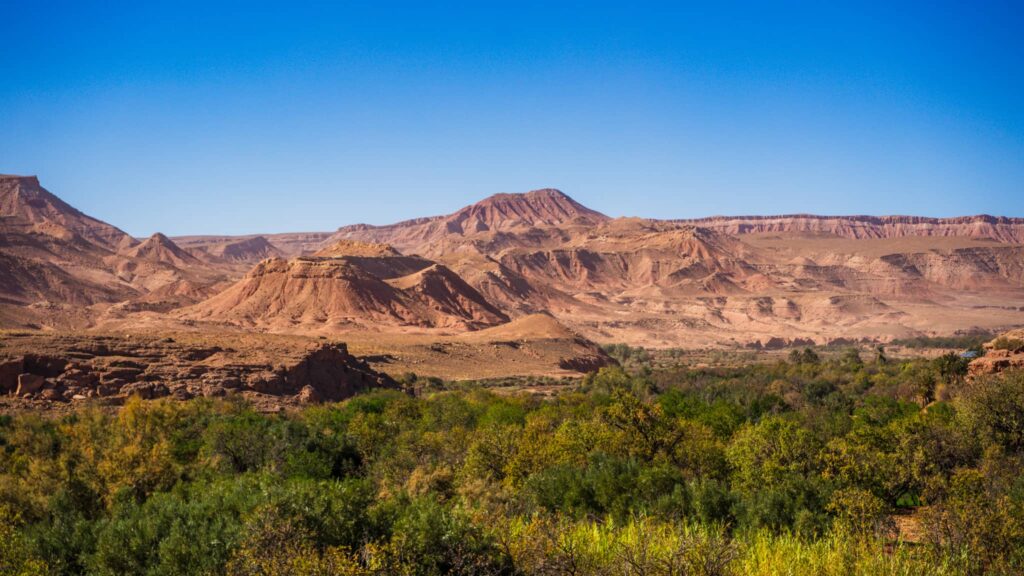
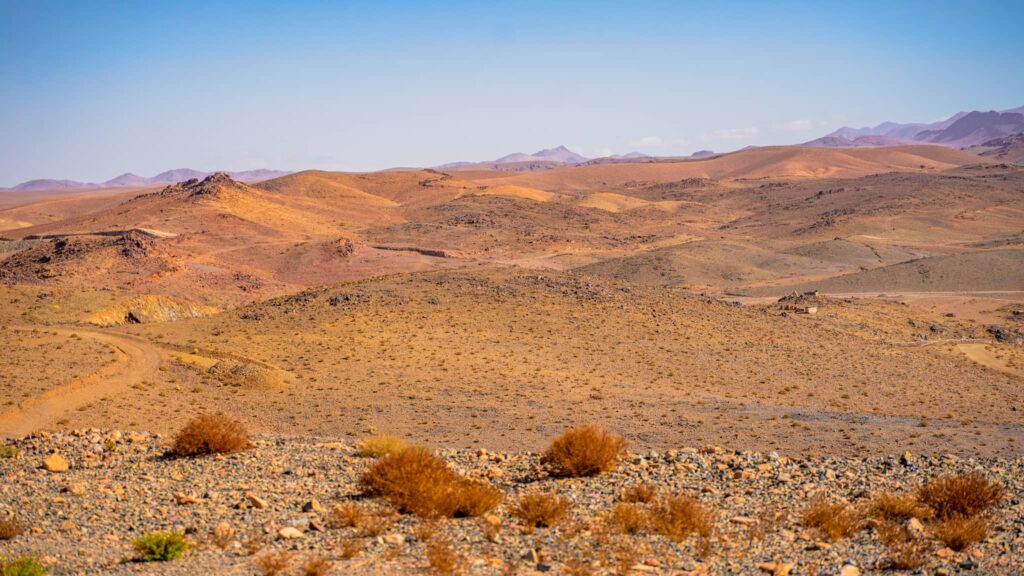
Marrakech is a good starting point for exploring many of Morocco’s top excursion destinations. The links below will take you to GetYourGuide, where you can find guided and multi-day tours online.
Days 1 and 2 – Marrakech
The first two days are devoted to getting lost in the labyrinth of alleyways in the medina of Marrakech, one of the most atmospheric places in Morocco. The narrow streets are lined with endless rows of stalls selling babouches, lanterns, and fabrics. Markets teem with fruit, nuts, and spices. Secret alleyways lead to leather beaters, metal smiths, and fabric dyers.
Marrakech is best visited on foot. The city is not very large, so the main attractions are located close to each other.
What to see in Marrakech: A few must-sees
- Explore the Medina: A labyrinth of narrow streets and bustling souks where you can find everything from silver teapots and hand-woven carpets to fragrant spices and fresh dates.
- Place Jemaa el-Fna: This UNESCO World Heritage site has preserved the traditions of halqa (street theater) since the 11th century, with snake charmers, acrobats, fortune-tellers, and henna artists. Go in the evening, when the food stalls open, to sample local dishes such as La tanjia, a meat and vegetable dish cooked in an earthenware pot.
- Visit the Médersa Ben Youssef, a former Koranic school.
- Walk around the Koutoubia mosque.
- Visit the Palais El Badi. The Palais El Badi is a superb example of Moroccan architecture and culture, and an essential part of Marrakech’s history.
- Visit the Bahia Palace, adorned with colorful mosaics. Stroll through its lush inner courtyards and extravagant main courtyard.
- Go to the Majorelle Garden: A very Instagrammable residence and garden created by Jacques Majorelle in the 1920s, which later served as the home of Yves Saint Laurent. Discover 2.5 hectares of gardens, a Berber museum, and the Yves Saint Laurent museum.
- Sleep in a riad.
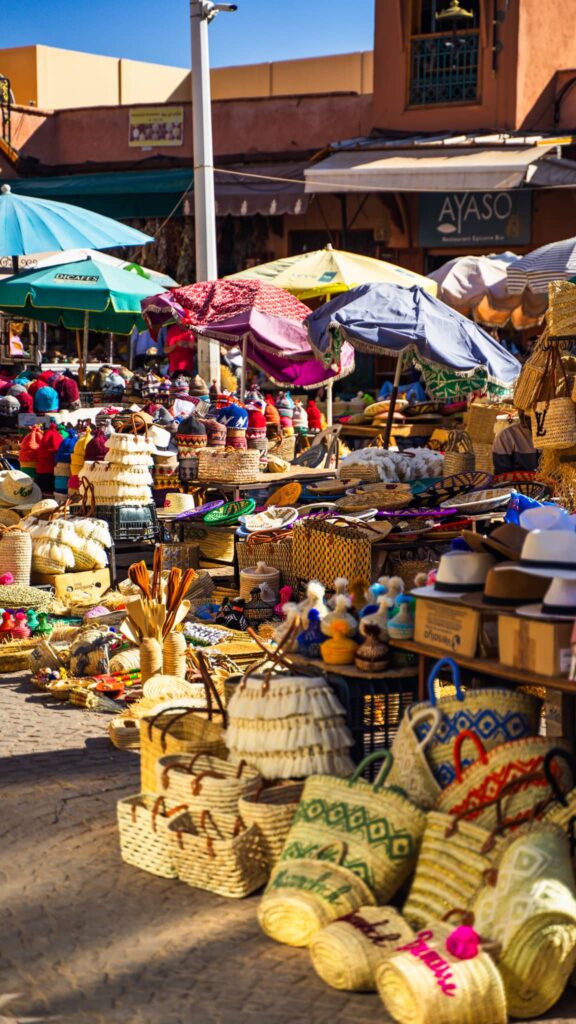
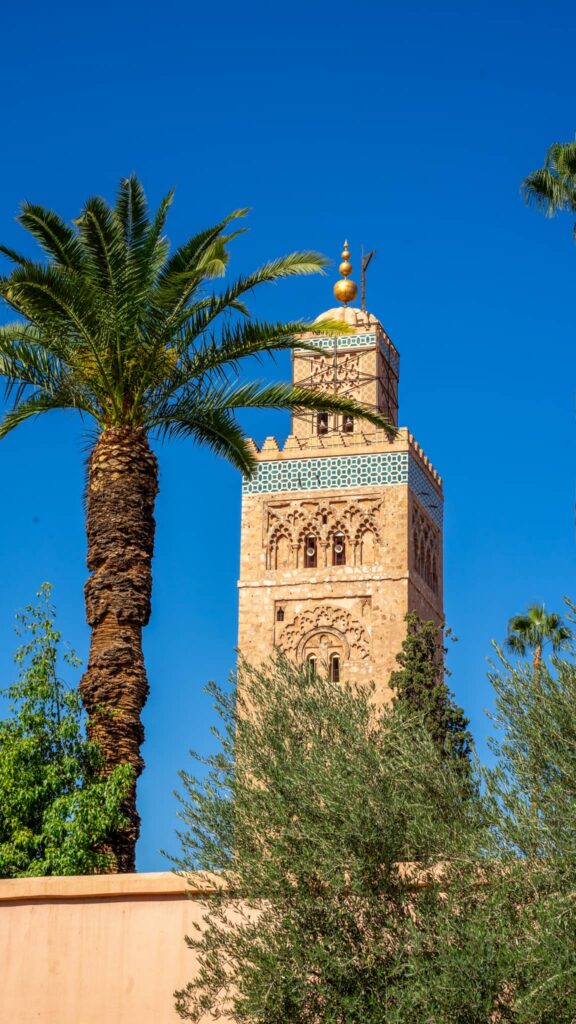
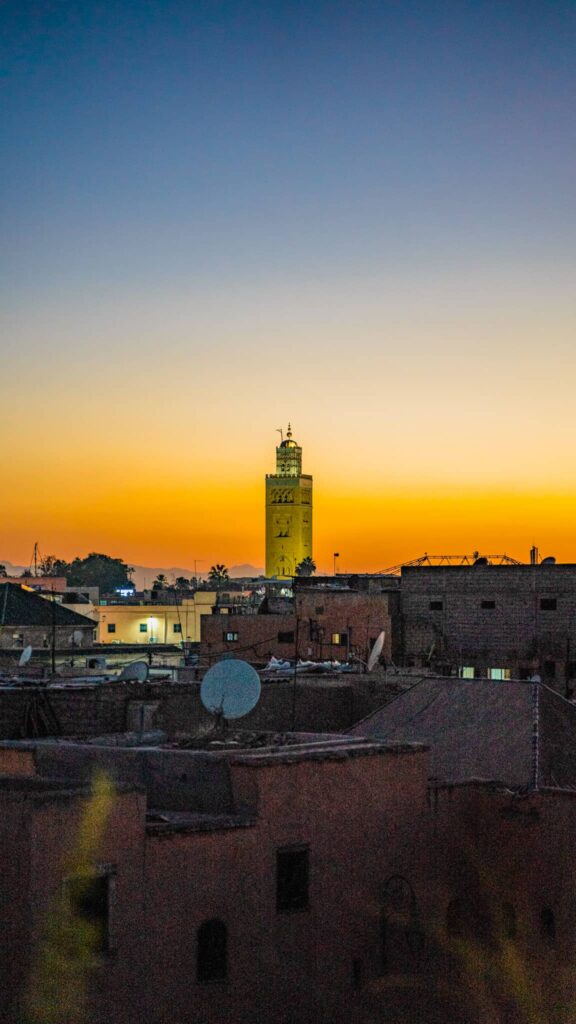
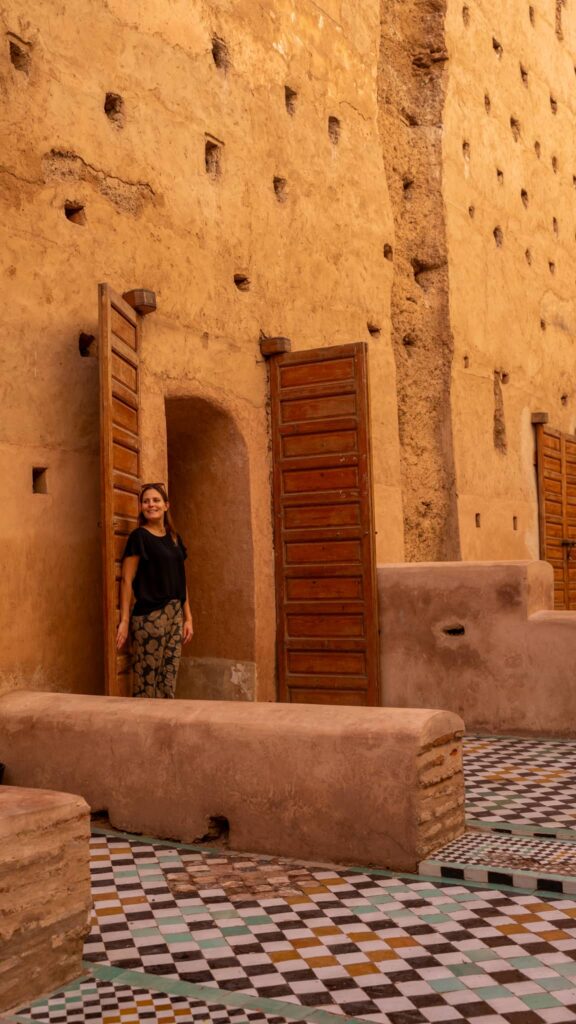
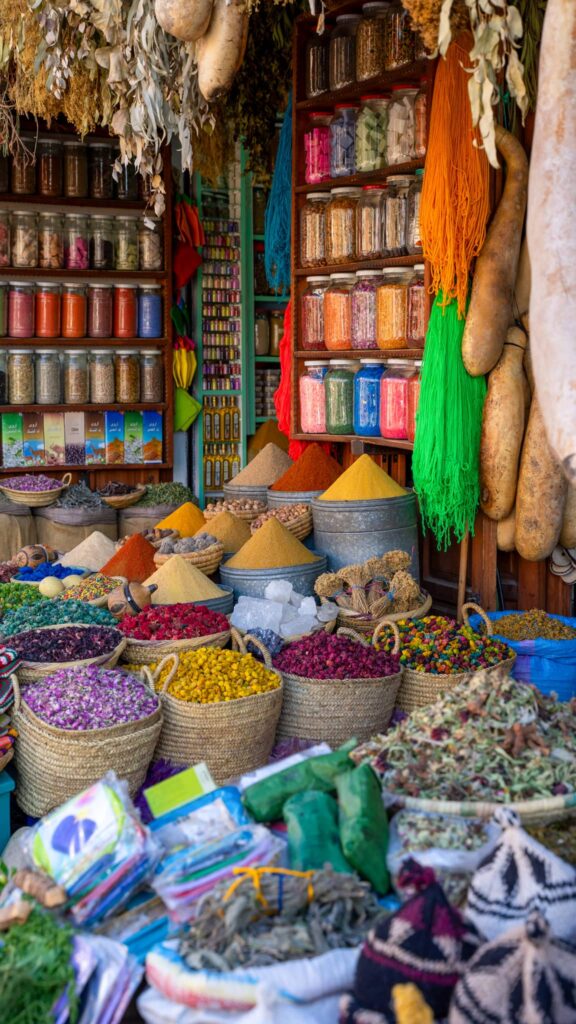
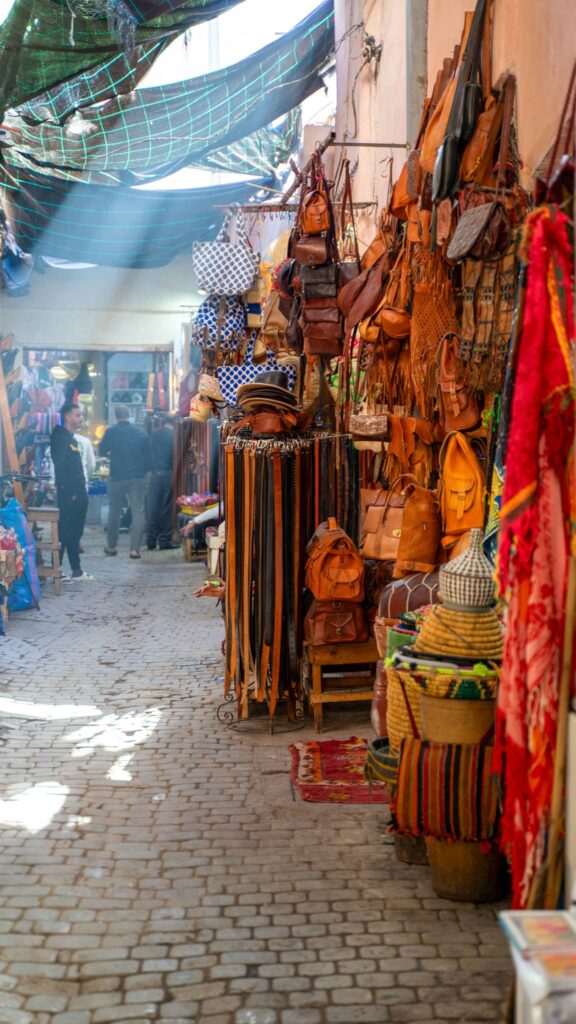
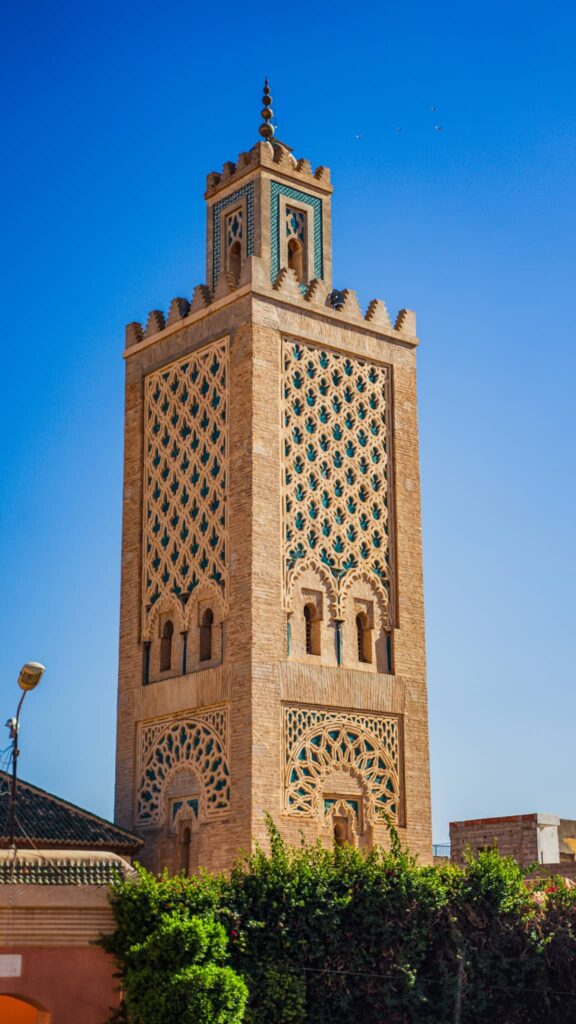
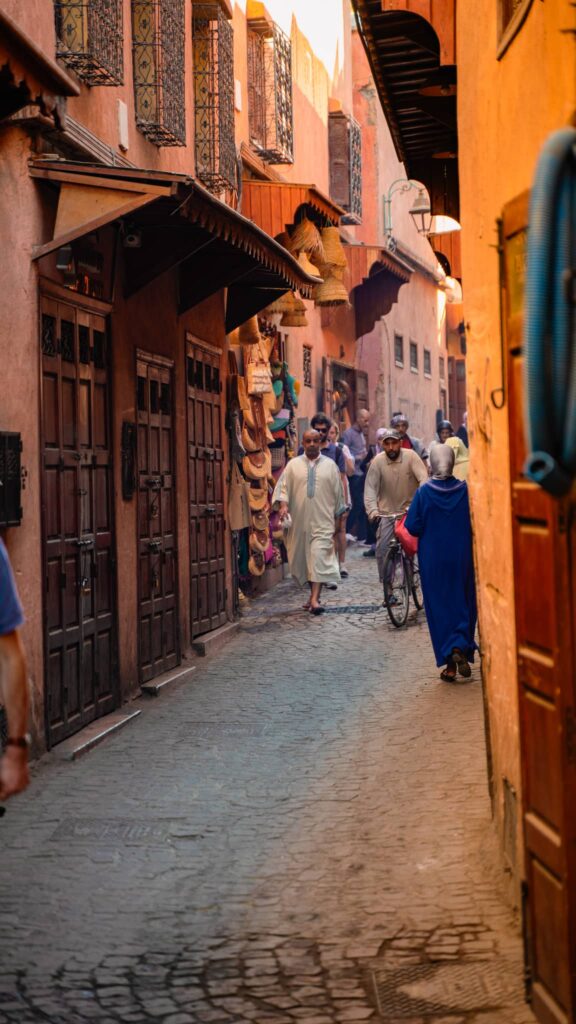
A few good addresses
- NOMAD Restaurant Marrakech Medina: This restaurant has an incredible view.
- Café des épices : a pleasant place for a drink.
- Restaurant L’mida is in a magnificent rooftop setting.
- La Pergola: Nice place for an evening drink.
- Café Arabe: Restaurant with a lounge atmosphere.
- To sleep, I recommend the riad La Terrasse des Oliviers, see THIS article.
Day 3 – Agafay Desert
Driving time // 45 minutes from Marrakech to Agafay desert
When you think of the desert, you immediately think of the golden dunes that stretch from Merzouga to the Sahara. Few people, however, are aware of the existence of another desert: the Agafay Desert. It’s about 30 km from Marrakech, but no less interesting! This is an ideal getaway from the hustle and bustle of the city if you’re only spending a few days in Marrakech.
Unlike the Saharan desert, the Agafay desert is a stony desert. There are no high dunes here, just rocky hummocks and spectacular views of the High Atlas mountains. But above all, that feeling of solitude and silence can only be felt in the desert.
The desert is easily accessible by car, as the roads are paved.
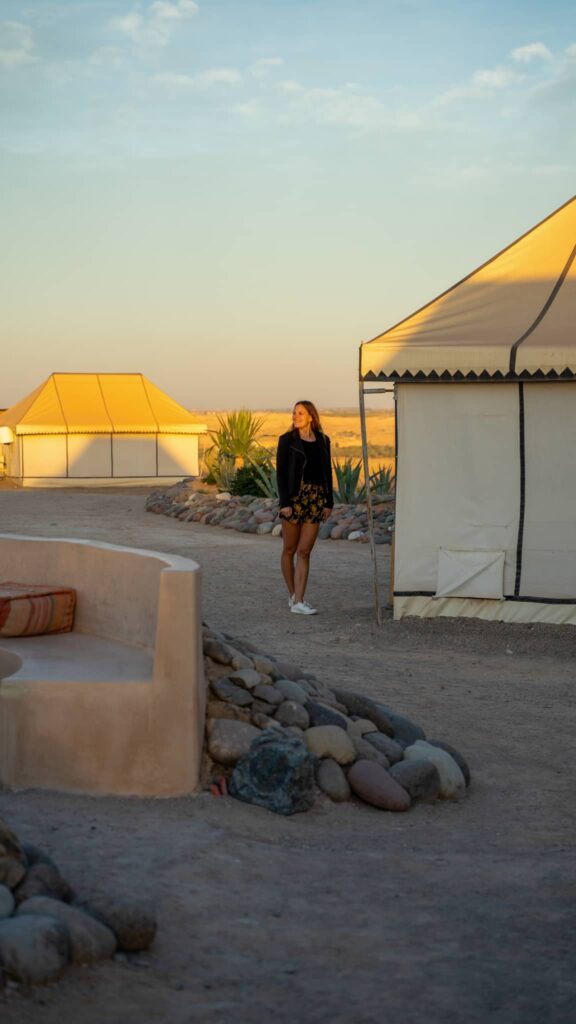
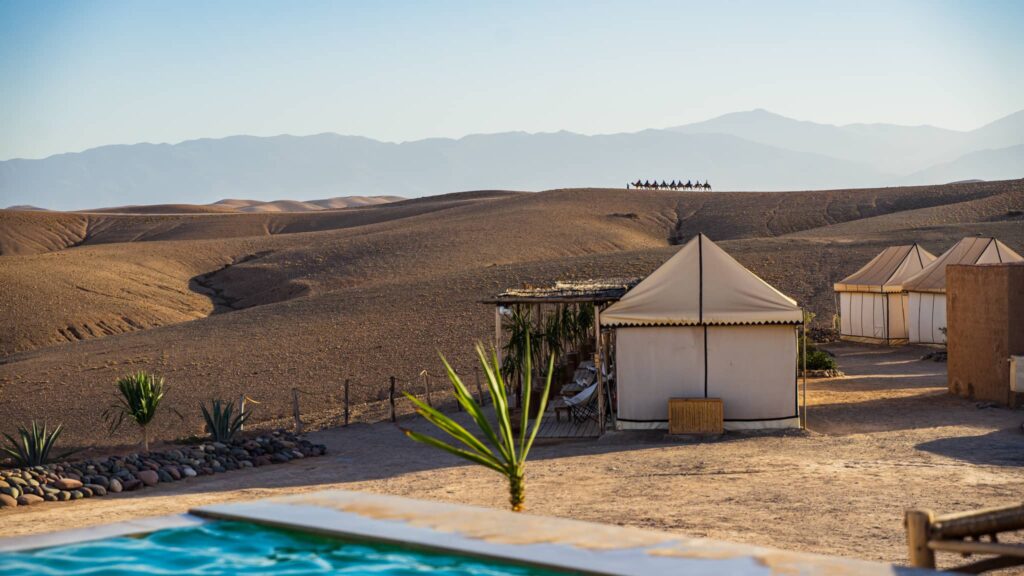
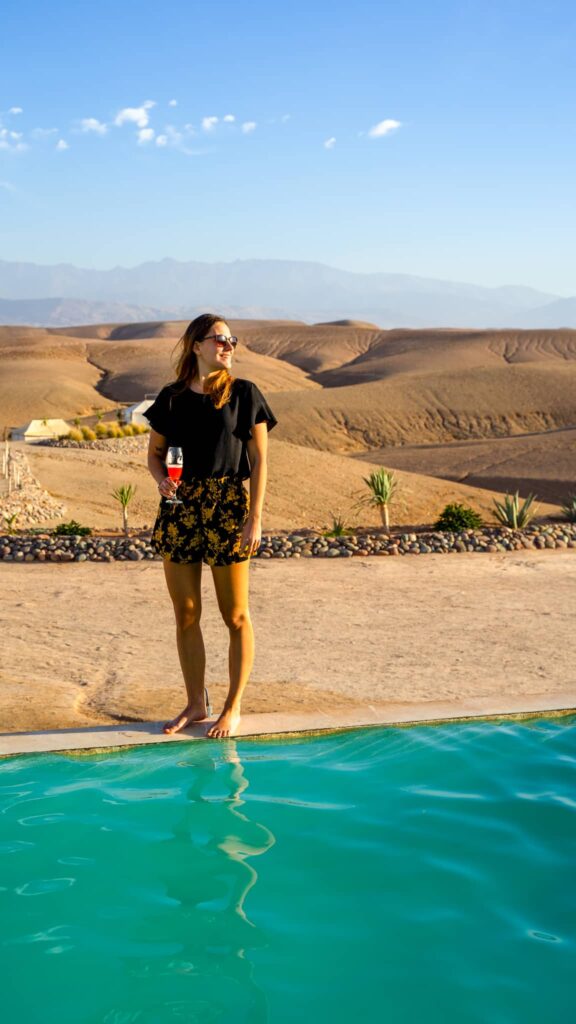
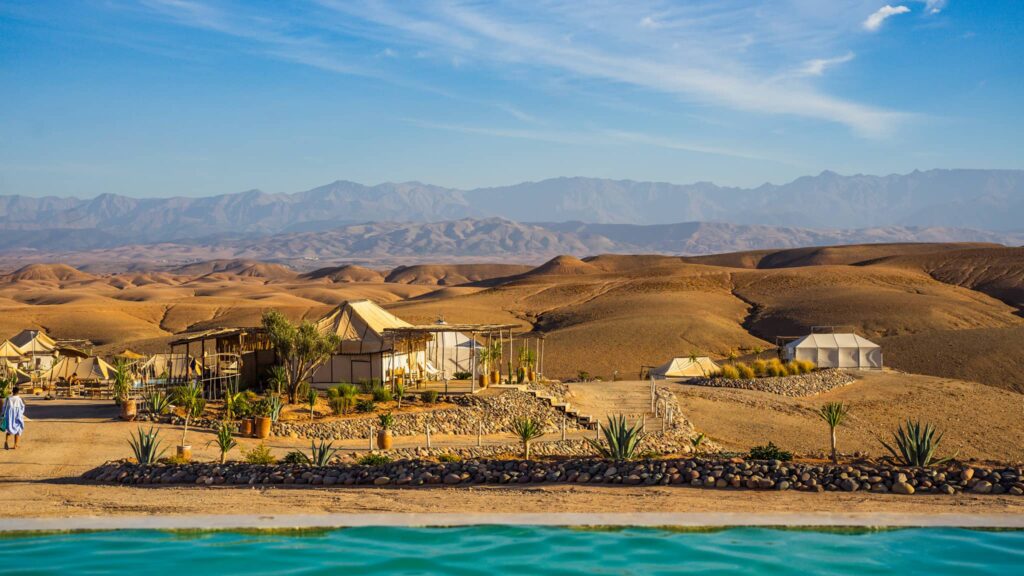
What to do in the Agafay desert?
Many agencies offer tours on quad bikes or camels, but the must is to spend a night in the Agafay desert among the few camps in the area. It’s a magical experience to be in the middle of nowhere, relaxing under the stars and listening to the silence.
Our accommodation: We stayed at Selina Nomad Camp.
Day 3 – Ait Ben Haddou & High Atlas Road
Driving time // 4 hours 30 minutes from Marrakech to Aït Ben Haddou
Crossing the High Atlas was one of the most exciting road trip adventures ever. We took the road over the Tizi n’Tichka, a 2,260 m mountain pass. The road from Marrakech to Ait Ben Haddou is impressive, and you’ll find plenty of photo spots along the way. Incidentally, if you’re planning to trek in Morocco, the Atlas Mountains will be a fantastic choice for you!
After driving for 185 km, we arrived at Ait Ben Haddou. The Aït Ben Haddou ksar is a fortified village and a symbol of Amazigh culture and earthen architecture in south-east Morocco. This impressive masterpiece was built on the side of a rock in the Ounila valley and stands in perfect harmony with its natural surroundings.
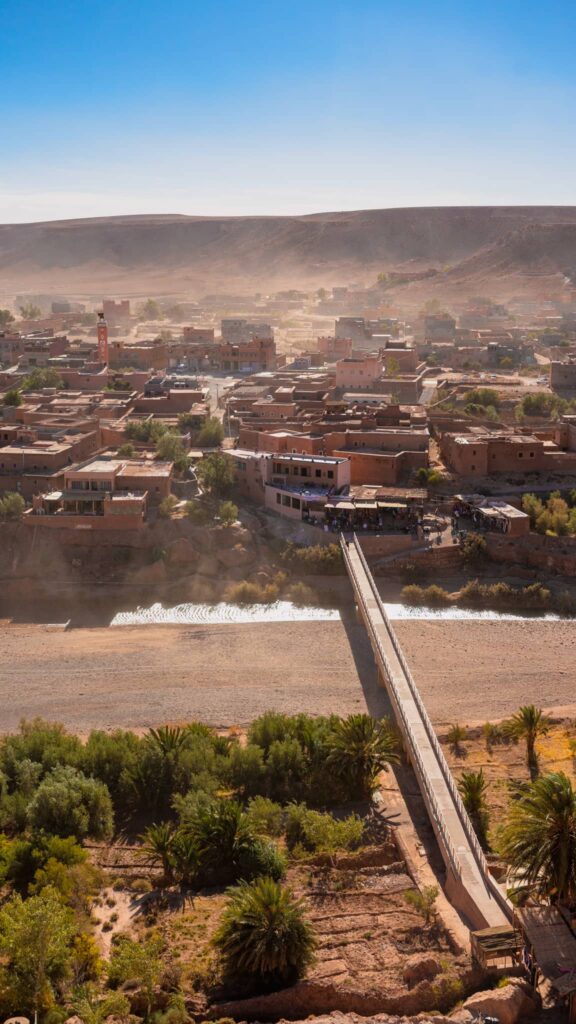
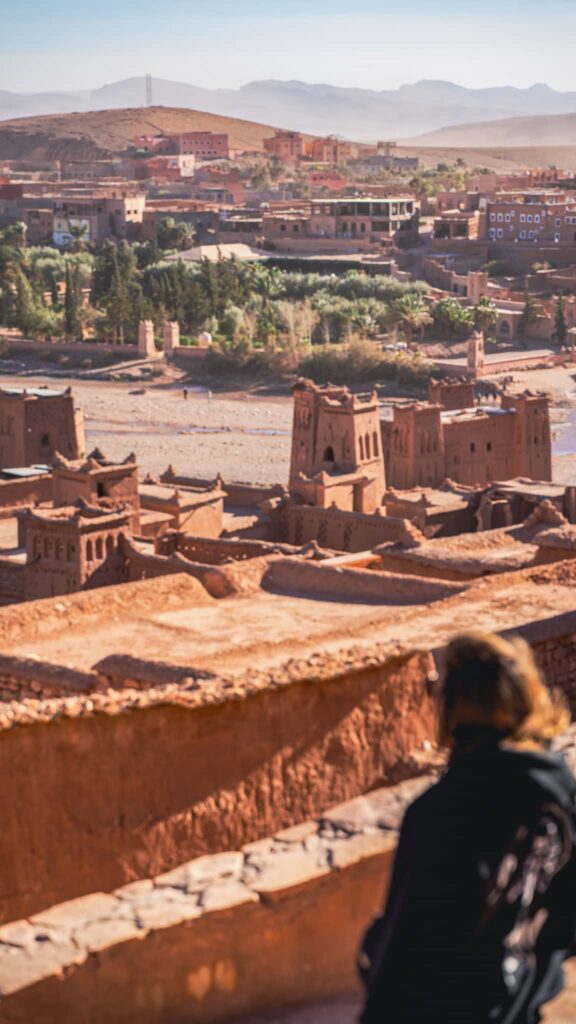

According to a ranking by Time Out, the village of Aït Ben Haddou takes 12th place among the 20 most beautiful villages in the world. Over 80 films have been shot in the ksar of Aït Ben Haddou, including Game of Thrones, Season 3, 2013.
Admission to the ksar is free. However, to make the most of your stay in Aït Ben Haddou, we recommend themed tours accompanied by guides approved by the Ighrem N’Iqendaren Tourism Cooperative.
My good addresses
Our accommodation: Kasbah Valentine
Restaurant: Tawesna is a tea room run by the village’s women. You can also enjoy a quick lunch or book an authentic Amazigh lunch. You can also dine at our accommodation’s restaurant, Kasbah Valentine, which we have tried and approved.
Day 4 – Todra Gorge – Tinghir
Driving time // 3 hours 30 – from Ait Ben Haddou to Tinghir
The next day, we explored Tinghir and the Todra Gorge. It is a magical place and one of the highlights of the trip. Tinghir is a magnificent, immense oasis, where you’re confronted with pure nature and picturesque landscapes. We went for a walk, and of course, as in any natural microcosm of this kind, there’s a real life inside, and it mainly concerns those who cultivate it and are the poorest.
Tinghir
Tinghir is perched at an altitude of over 1300m, with peaks reaching 3000m north. It lies at the center of one of the most beautiful oases in southern Morocco. This lush palm grove stretches over 30km and is 500 to 1500m wide, following the Oued Todgha.
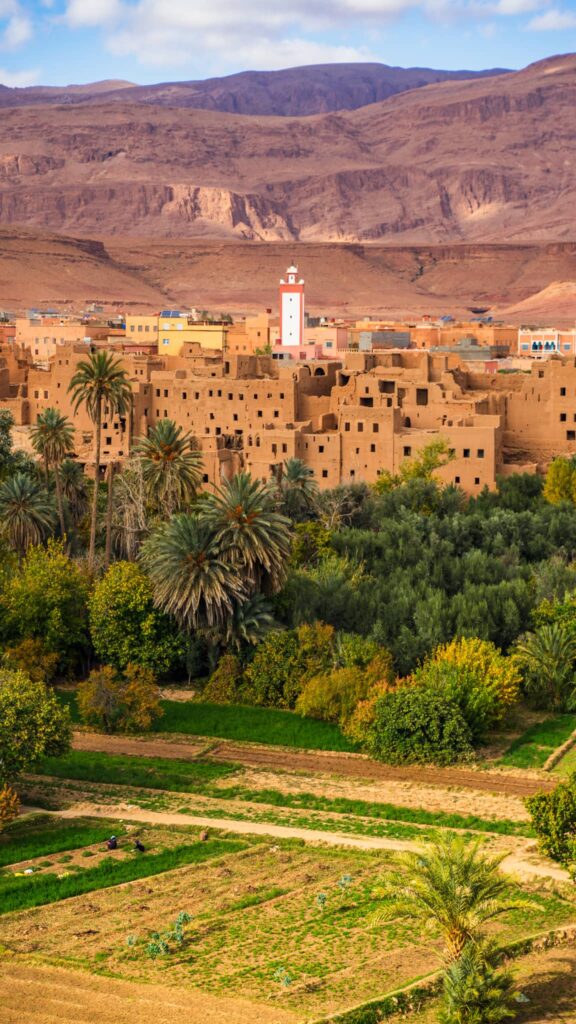


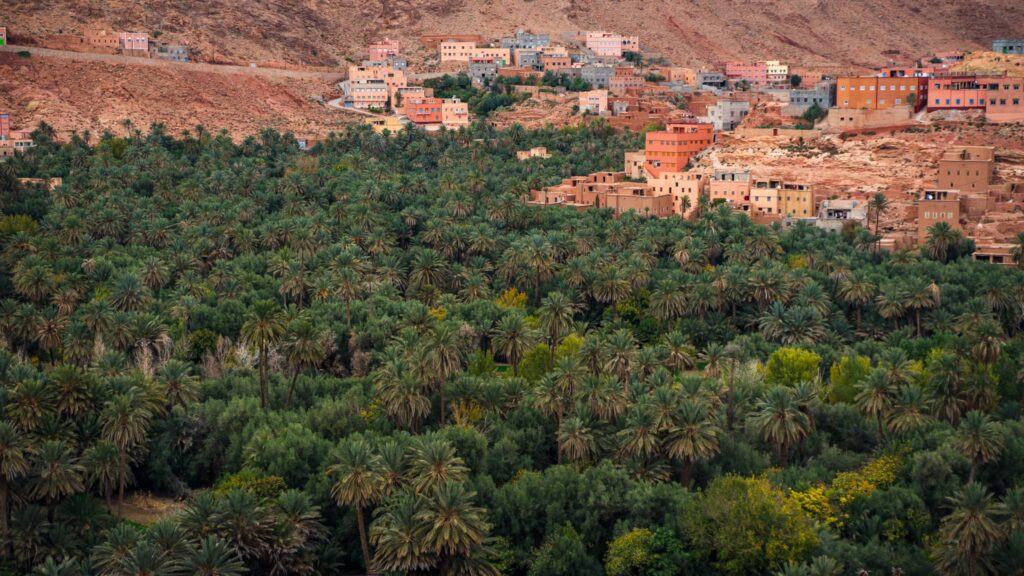
Todra Gorge
The Todra Gorge is also remarkable, with probably one of the most impressive canyons in the world. Located 15 km from Tinghir, the Todra Gorges are the gateway to the High Atlas and are impressive for their immense limestone cliffs. Apart from any symbolic significance, these gorges are important to the local population because they feed the large palm grove of Tinghir.
You can stroll through the gorges for a few hours, hike, or even trek. Or, like us, you can go for a drive.
Driving through this huge, spectacular canyon, past traditional Berber villages, red clay castles, and green palm groves, is well worth the detour!
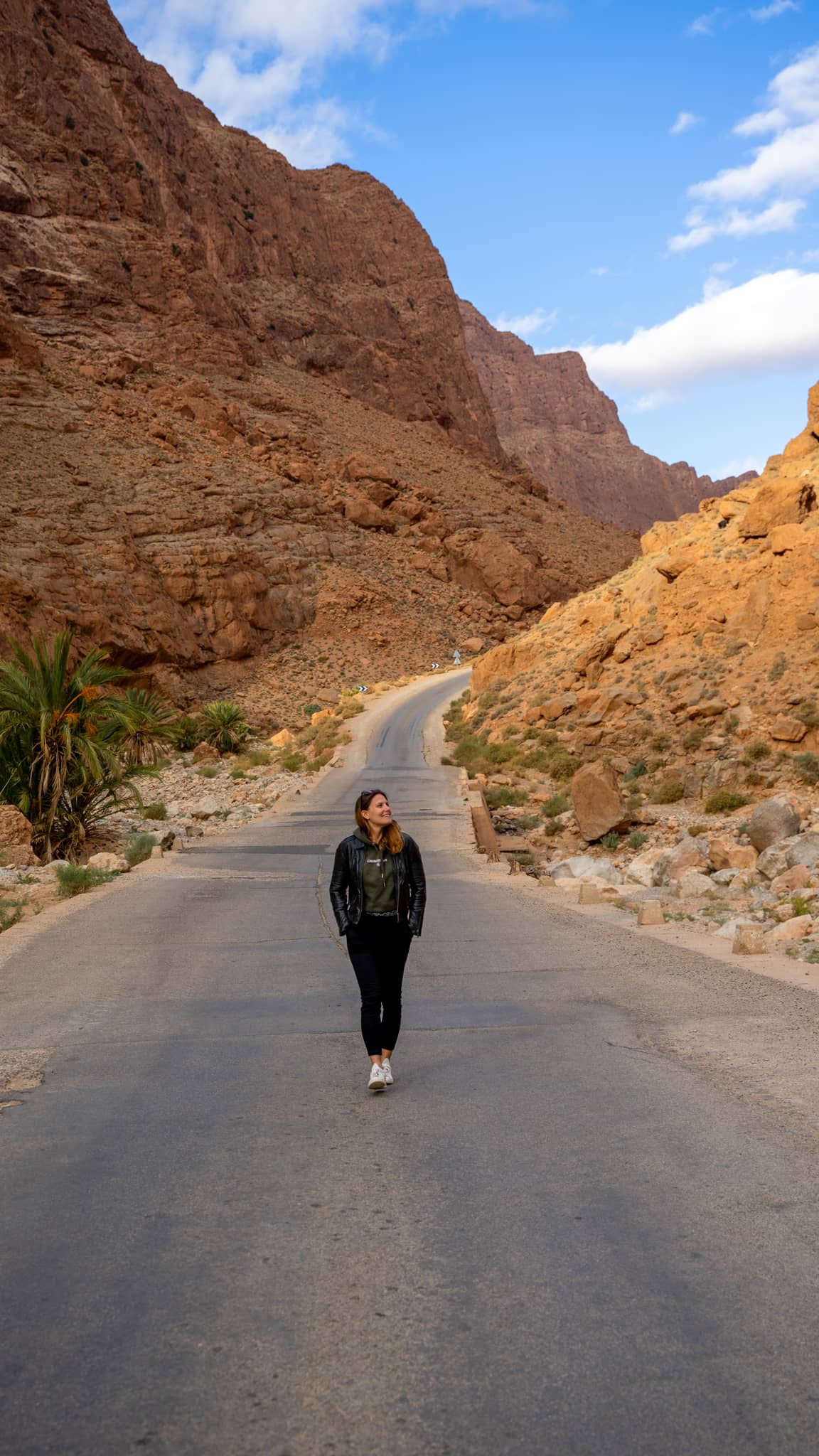
My good addresses
Accommodation: Bed & Breakfast « Retour au calme »
Restaurant: Restaurant café Central, excellent Moroccan cuisine!
Good to know!
Many tourists visit the Todra Gorge as part of a guided tour from Marrakech. On GetYourGuide, you’ll find some excellent excursions, which usually include visiting the Merzouga desert.
You can also explore the Todra Gorge on your own with a rental car. On a perfect Morocco itinerary, a stop at this famous canyon shouldn’t be missed!
Day 5 – Dades Gorge
Driving time // Tinghir – Dades 1 hour 30 minutes
Driving time // Dades – Marrakech 5 hours drive
The following day, we explored the Dades Gorge, with its spectacular scenery including the monkey fingers at the start of the gorge and the winding road to the top of the gorge.
The Dades Gorge begins just a few kilometers from the town of Boumalne and stretches for some 45 kilometers through gigantic rock formations and cliffs 200 to 500 meters high. In between, there are always small villages and kasbahs, distinguished above all by their reddish colors.
By car or motorcycle, there are always fascinating places to pause along the way. One of these is the Belvedere des Doigts de Singe. This impressive rock formation is located around 9 kilometers from Boumalne Dades and lies on the road leading to the Dades Gorge, just off the road on the right-hand side.
Towards the end of the valley, the panorama of the gorge becomes increasingly spectacular. The highlight is the winding road to Zik-Zak. The journey along this serpentine road is adventurous, but still very safe. After a few hairpin bends, you’re already at the top and enjoying breathtaking views over the valley.
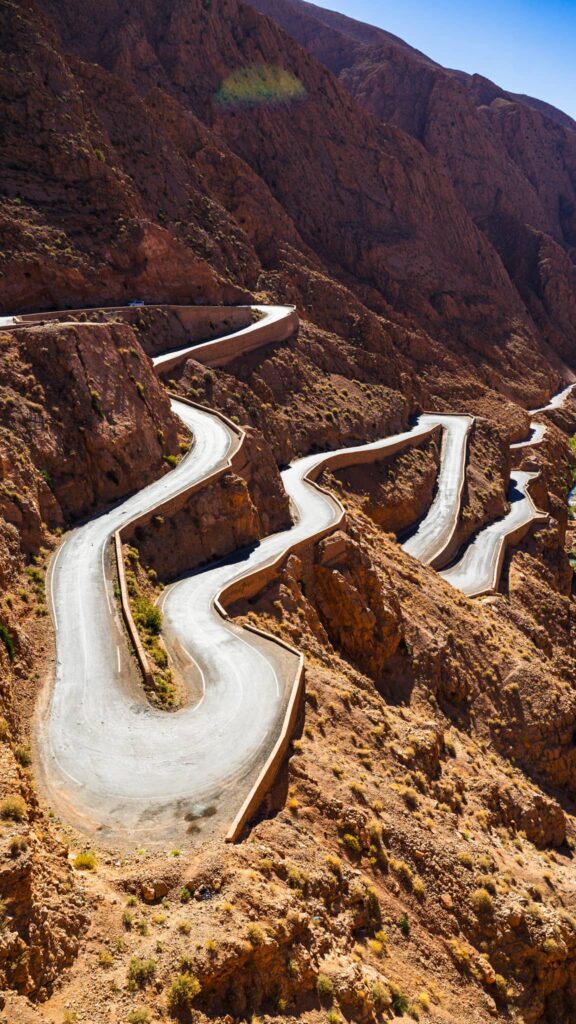
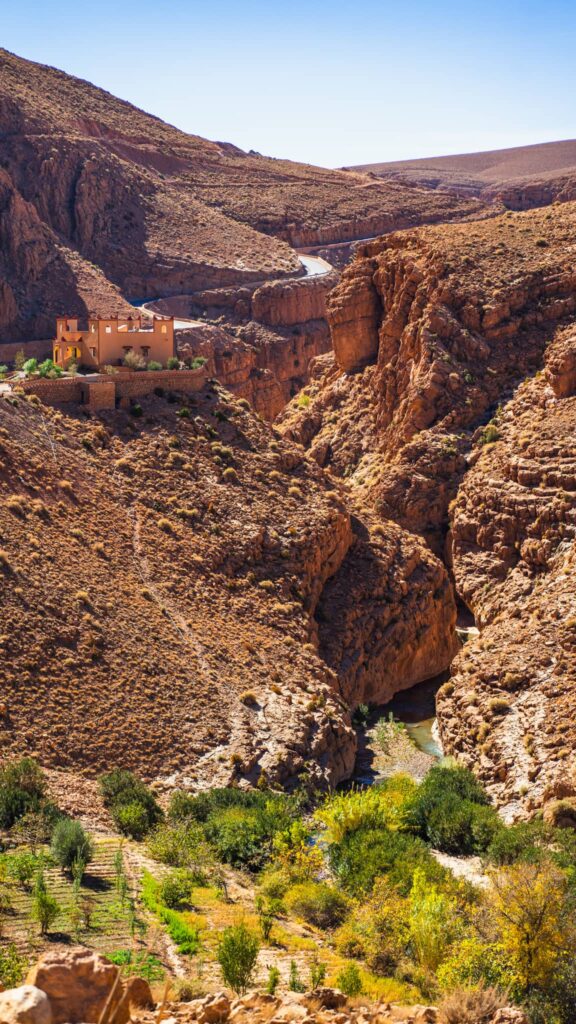
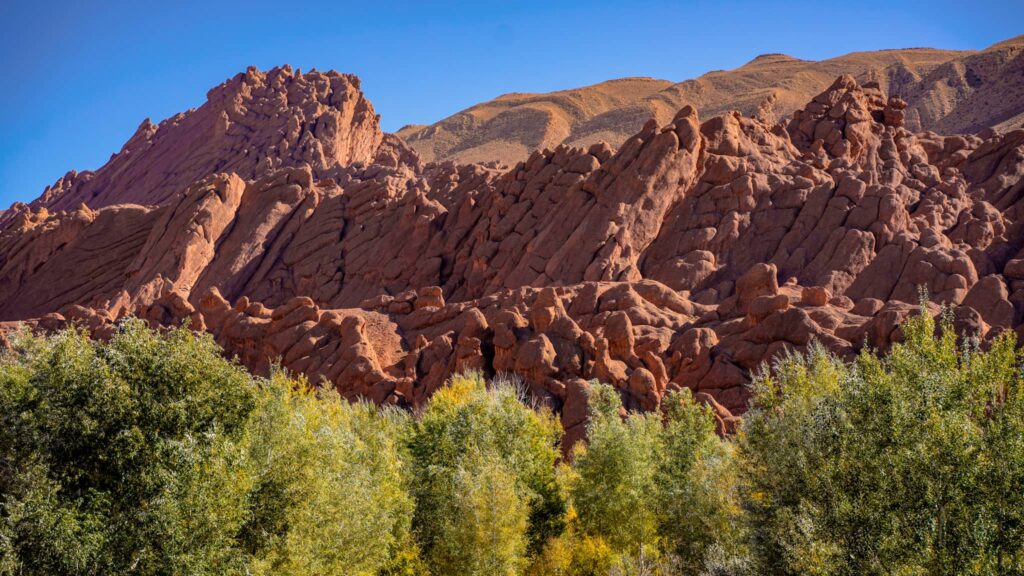
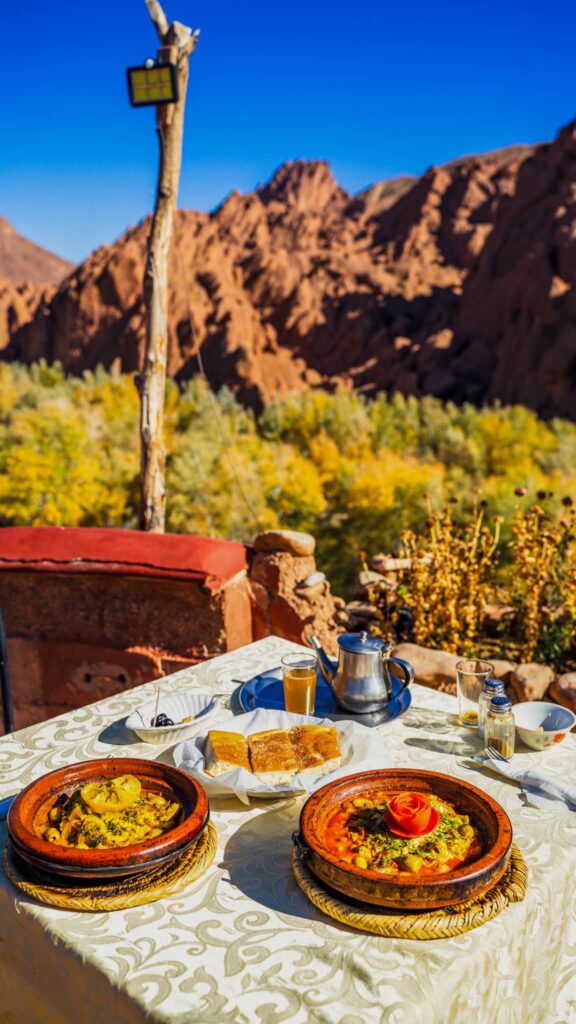
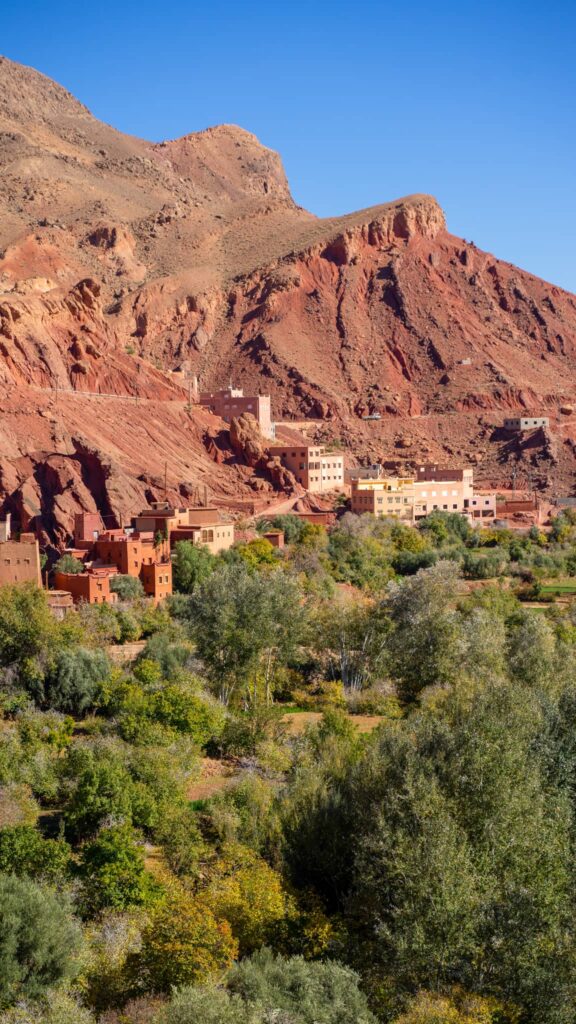
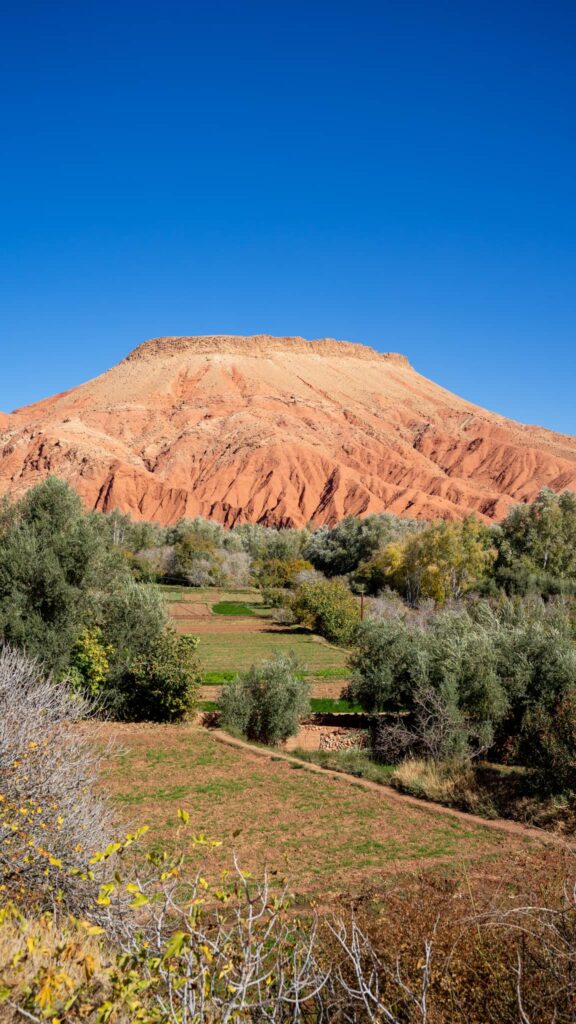
Monkey Finger Canyon hike
For the brave, there’s the option of hiking.
- Distance: 8.0 km
- Ascent: 243 metres
- Type of route: Loop
My good addresses
Restaurant Isabel – Chez Moha: We stopped here after we visited the Dades Gorge. It’s a place with a splendid view, a very warm welcome, and excellent cuisine. We recommend
Day 6 and 7: Back to Marrakech
I’m back in Marrakech to bask in the sun for these last two days in a hotel near the Palmerai, this time at the Manzil La Tortue Hotel. It’s a real little haven of peace!
What destinations would you add to this Morocco itinerary?
We wouldn’t mind doing this itinerary in two or three weeks. It would give us more time to stop along the way. Other things to add to this itinerary in Morocco to make it a complete itinerary for the whole country are Essaouira, Fez, Rabat, Casablanca, and Chefchaouen (the blue city) or Agadir and Taghazout.
We hope you enjoyed this article, Morocco: a one-week itinerary. If you’d like more inspiration, don’t hesitate to consult all our other articles about other European trips.

